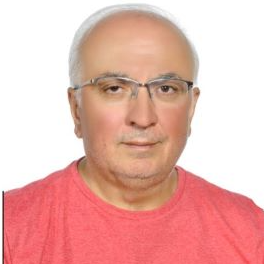Selected Papers from the 8th International Conference on Superconductivity and Magnetism (ICSM2023)
A special issue of Condensed Matter (ISSN 2410-3896).
Deadline for manuscript submissions: closed (30 September 2023) | Viewed by 16951
Special Issue Editors
Interests: superconducting materials; MgB2; Josephson junction devices; various qubit systems; quantum computing
Special Issues, Collections and Topics in MDPI journals
Interests: ferroelectrics; antiferroelectricss; multiferroics; magnetism; phase transitions; superconductivity; nonlinear interactions
Special Issues, Collections and Topics in MDPI journals
Interests: multifunctional magnetic molecular materials; carbon-based magnetism; graphene; 2D materials; low dimensional magnetism; molecular spintronics; skyrmions in quantum materials; molecular refrigeration; chiral magnetism; organic magnets; magneto-calorics and quantum computation
Special Issues, Collections and Topics in MDPI journals
Interests: topological quantum matter; superconductivity; the new state of matter; superinsulator; superconductor–insulator transition; large-scale adoption of quantum technologies
Special Issues, Collections and Topics in MDPI journals
Special Issue Information
Dear Colleagues,
The scope and topics of this ICSM conference series have been of special interest throughout the 21st century for the superconductivity and magnetism communities because new energy-saving solutions for electricity grids, transport, metrology, information, communication technologies, quantum materials, and technologies together with healthcare are their most promising potential applications.
This Special Issue will help to coordinate and strengthen scientific and technological collaborations in the fields of superconductivity and magnetism through a variety of worldwide efforts by covering a variety of focuses ranging from fundamentals, materials, and applications of the various disciplines and viewpoints, assuring that pioneering roles in the fields of the focus sessions of interest are dealt with.
The Special Issue will address the fundamental issues, as well as explore possible novel applications which are important for advances in high technology-related industries, as week as also emerging new disruptive technologies. The ICSM will also contribute to innovation-based growth in the field of superconductivity, aiming to overcome the existing bottlenecks for widespread industrial applications in view of nanotechnologies. The key novel approach related to ICSM is the exploitation of recent spectacular progress in the design and fabrication of nanostructured materials fabricated for lower dimensions, in order to develop and implement such flux and condensate confinement patterns. This will not only substantially improve the material's critical parameters but also lead to novel functionalities of these nano-patterned materials. Due to the advanced dedicated modern technologies needed to produce nanostructured superconductors and magnetic materials, international and interdisciplinary collaboration is essential for successful implementation.
ICSM has become a high-level platform for networking as a bridge between the east and the west. The journal will waive the Article Processing Fees for selected papers presented at ICSM2023. The papers presented in the following 8 mainstreams at the ICSM2023 conference will form the scope and the contents of the Special issue.
- A: Superconductivity: Materials, Synthesis, and Characterization
- B: Magnetism: Materials, Synthesis, and Characterization
- C: Interplay of Superconductivity and Magnetism
- D: Large Scale and Energy Applications of Superconducting and Magnetic Materials
- E: Electronic Applications of Superconducting and Magnetic Materials
- F: Theory, Mechanisms, and Fundamentals
- G: Cryogenics, Materials, and Engineering
- H: Quantum Science and Technology
Prof. Dr. Ali Gencer
Prof. Dr. Annette Bussmann-Holder
Dr. J. Javier Campo Ruiz
Prof. Dr. Valerii Vinokur
Prof. Dr. Germán F. de la Fuente
Guest Editors
Manuscript Submission Information
Manuscripts should be submitted online at www.mdpi.com by registering and logging in to this website. Once you are registered, click here to go to the submission form. Manuscripts can be submitted until the deadline. All submissions that pass pre-check are peer-reviewed. Accepted papers will be published continuously in the journal (as soon as accepted) and will be listed together on the special issue website. Research articles, review articles as well as short communications are invited. For planned papers, a title and short abstract (about 100 words) can be sent to the Editorial Office for announcement on this website.
Submitted manuscripts should not have been published previously, nor be under consideration for publication elsewhere (except conference proceedings papers). All manuscripts are thoroughly refereed through a single-blind peer-review process. A guide for authors and other relevant information for submission of manuscripts is available on the Instructions for Authors page. Condensed Matter is an international peer-reviewed open access quarterly journal published by MDPI.
Please visit the Instructions for Authors page before submitting a manuscript. The Article Processing Charge (APC) for publication in this open access journal is 1600 CHF (Swiss Francs). Submitted papers should be well formatted and use good English. Authors may use MDPI's English editing service prior to publication or during author revisions.
Keywords
- superconductors
- magnetic materials
- spintronics
- topological materials
- heath care
- quantum materials
- quantum technologies









